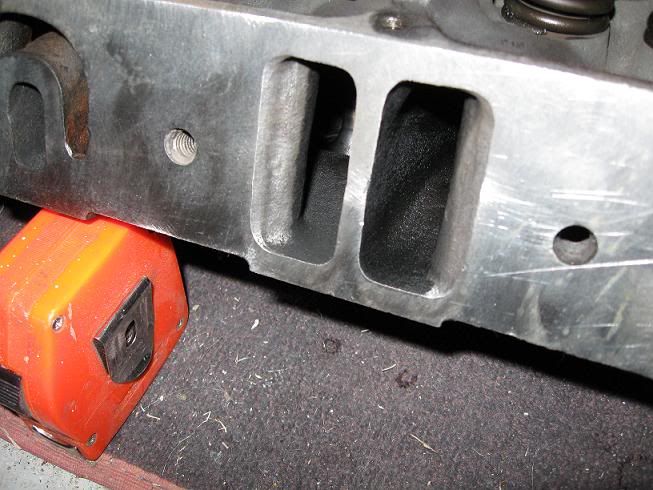These are '90 360 pickup 308 intake ports, and as you can see the mismatch is awful, about 3/16". This gasket is very close to the Air Gap's port size. If I open the port to gskt size, looks to me like that will only induce more tumble on the backside of the pinch.
I'm going to pare down the pinch as much as I feel comfortable with, to around .050" thick wall in the pushrod hole, but even then it would still be a huge ski ramp for airflow if gskt matched.
Any options here, such as splitting the difference with some epoxy in the manifold? Do I need to just get the smaller ported Performer to use with these heads? Already have the Air Gap, but if it's useless with these ports so be it.
I had the bowls cut, and I've blended them to a nice shape, but the factory intake port windows suck. Any fixes?
I'm going to pare down the pinch as much as I feel comfortable with, to around .050" thick wall in the pushrod hole, but even then it would still be a huge ski ramp for airflow if gskt matched.
Any options here, such as splitting the difference with some epoxy in the manifold? Do I need to just get the smaller ported Performer to use with these heads? Already have the Air Gap, but if it's useless with these ports so be it.
I had the bowls cut, and I've blended them to a nice shape, but the factory intake port windows suck. Any fixes?

















